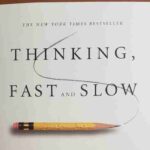The Endowment Effect is a psychological bias where people assign greater value to things they already own compared to identical items they don’t own. First popularized by behavioral economist Dan Ariely in his book Predictably Irrational: The Hidden Forces That Shape Our Decisions, the concept highlights how ownership changes our perception of value—even if that ownership is arbitrary.
A classic example Ariely shares involves students at Duke University trying to get tickets to a Blue Devils basketball game. The university—with its relatively small arena—makes the process tough, filtering out only the most dedicated fans through an endurance-based process. Once the tickets are distributed via a lottery, researchers asked both winners and losers how much the tickets were worth. Students who won tickets weren’t willing to sell them for less than $2,400. Meanwhile, those who didn’t win the tickets were only willing to pay around $170. That’s a staggering 14x difference, purely based on ownership.
This stark contrast exemplifies how owning something—even briefly—can drastically increase its perceived value.
The Endowment Effect in Business
So, what does this mean for entrepreneurs and marketers? Simply put, if you can get customers to feel like they “own” your product or service, even temporarily, you increase the likelihood they’ll buy it—or value it more highly.
Here are a few effective strategies that smart businesses use to tap into the Endowment Effect:
1. Free Trials and Freemium Models
Software companies like Dropbox, Adobe, and Canva offer free trials or freemium versions of their products. This gives users a chance to integrate the product into their workflow. Once they’ve used it for a few days or weeks, it feels like part of their routine—they feel ownership. Suddenly, the thought of losing access to those tools is uncomfortable. That’s when many convert to paying customers.
2. Test Drives and Take-Home Products
Car dealerships have long known the power of letting you “try before you buy.” They offer extended test drives or even overnight take-homes. Why? Because once that new car is in your driveway, it feels like yours. And you’re far less likely to give it up. Mattress companies like Casper and Purple offer 100-night sleep trials. Once you’ve slept on it for three months, packing it back up feels unnatural—even if the return policy allows it.
3. Augmented Reality in Online Shopping
Companies like Warby Parker and IKEA use AR (augmented reality) to let customers “try on” glasses or visualize how furniture will look in their living room. This visualization fosters a sense of ownership before the purchase is even made.
4. Customization and Personalization
When customers personalize a product—be it monogrammed towels, a custom-built computer, or a choose-your-own-flavor snack box—they become more invested in it. This customization deepens their emotional connection and invokes the Endowment Effect even before delivery.
Why It Works: The Psychology Behind It
From an evolutionary standpoint, valuing what we own could be a form of self-preservation. If you’ve already invested time, energy, or emotion into something, your brain perceives it as part of your identity. Marketing professor Richard Thaler, who helped popularize this concept, suggests that ownership enhances value perception due to “loss aversion”—we fear losing what we have more than we desire gaining something new.
That fear of loss is a powerful motivator.
Applying the Endowment Effect in Your Marketing Strategy
If you’re a small business owner or entrepreneur, here are some actionable ways to put this cognitive bias to work for you:
- Offer low-risk trials or return guarantees: Make it easy for customers to try your product. The longer they use it, the more likely they are to keep it.
- Encourage digital engagement: Have users set up profiles, personalize dashboards, or create wish lists—anything that encourages them to invest emotionally.
- Use language that implies ownership: For example, use phrasing like “Your free trial,” “Build your plan,” or “Start your journey.”
- Get products in hands early: For physical goods, send samples or demo versions. For services, offer initial consultations or previews.
By creating a situation where customers feel they already “own” something, you reduce the psychological barrier to making a purchase.
Final Thoughts
The Endowment Effect is not just a quirky psychological phenomenon—it’s a tool savvy marketers can use to build better customer experiences. When you help people feel ownership before the sale, they’ll not only value your offerings more, but they’ll also be more committed, more loyal, and more likely to recommend you to others.
How can you redesign your customer experience to give prospects a sense of ownership before they buy?












